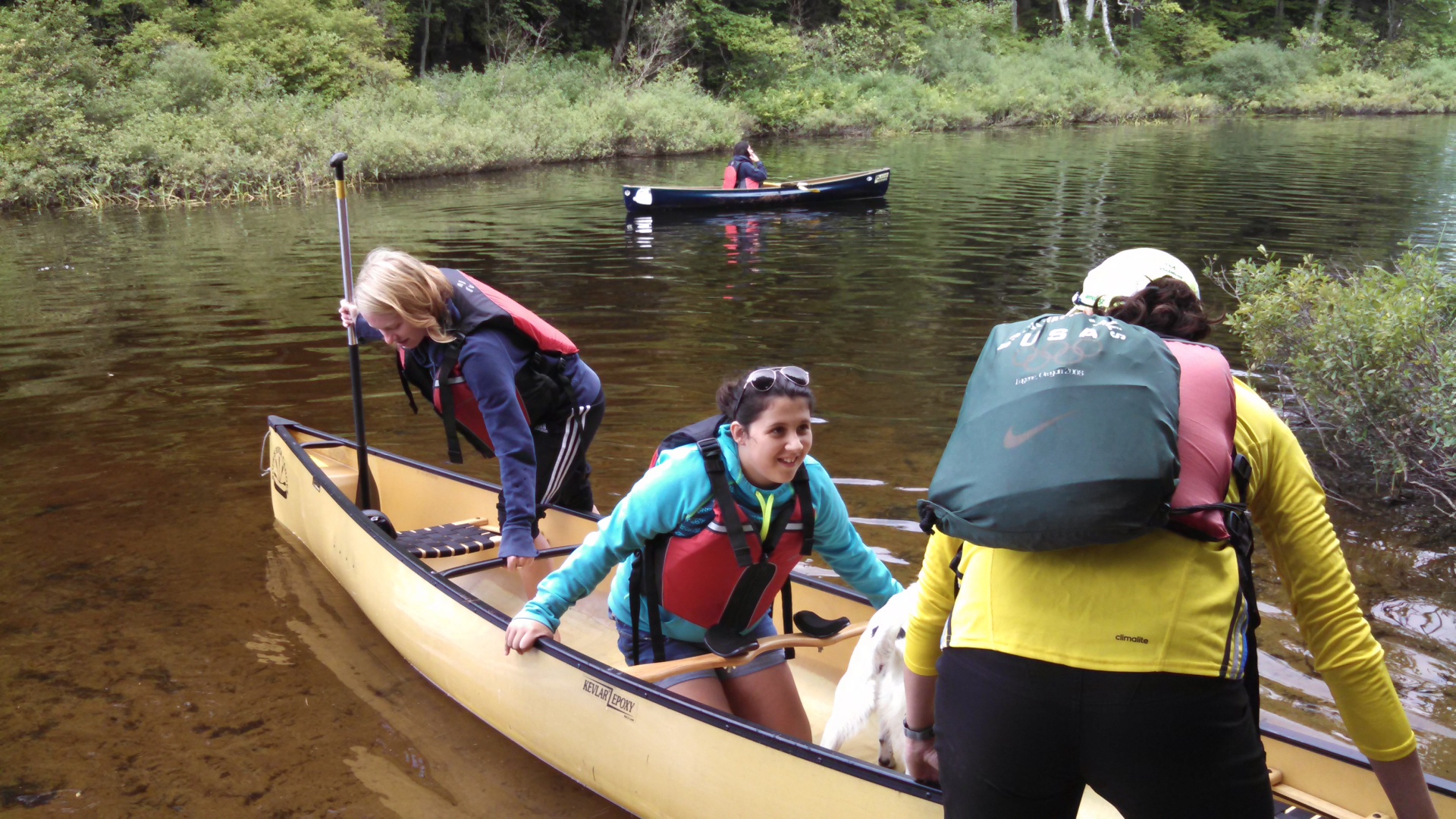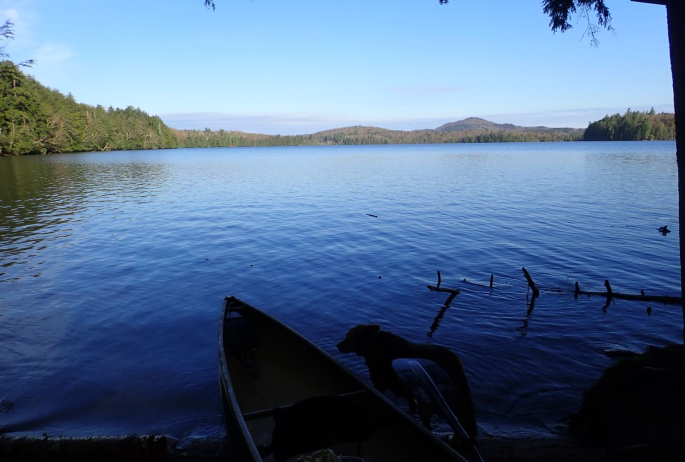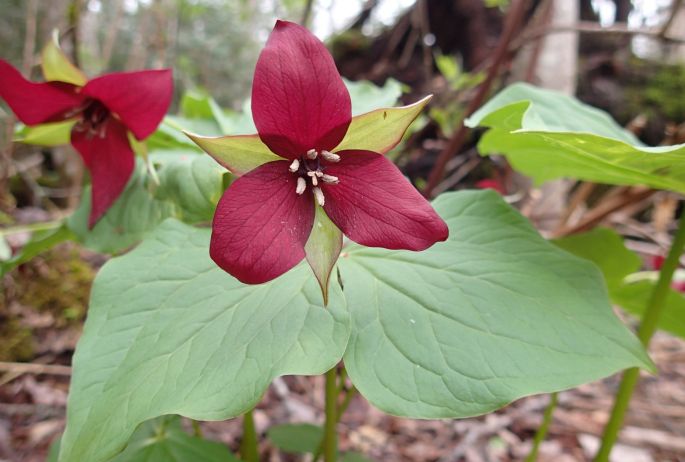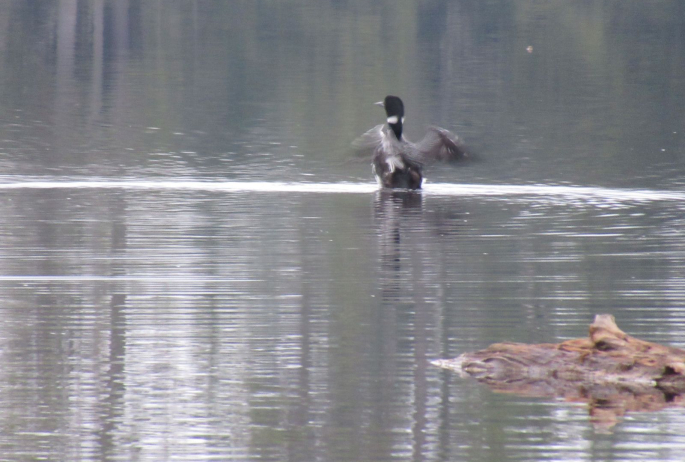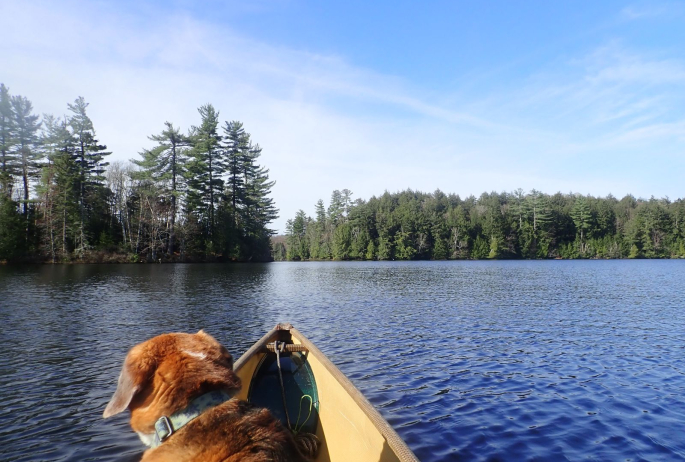Submitted by guest blogger: Rivka Cilley
It was a beautiful sunny day in May with temperatures in the mid 60s when a group of us set out to paddle from Hoel Pond to Long Pond. The sky was a rich blue with a similar color reflecting on the water. The water was calm and inviting.
We stepped into the water to launch our canoes, feeling the refreshing coolness of the water on our feet. We headed straight across Hoel Pond to the large overhanging rocks adjacent to the shore. We were greeted by a pair of loons swimming elegantly nearby. We followed the shore line as we paddled to the portage for Turtle Pond.
The portage from Hoel Pond to Turtle Pond is a narrow strip of land that is built up enough to support the train track that runs through this area. There is a culvert at the base that allows water to flow between the two ponds. As we approached the portage, we opted to glide through the culvert since the water level was so high. This portage is a nice stop over for a swim and a view of the two ponds after the water warms a bit more.
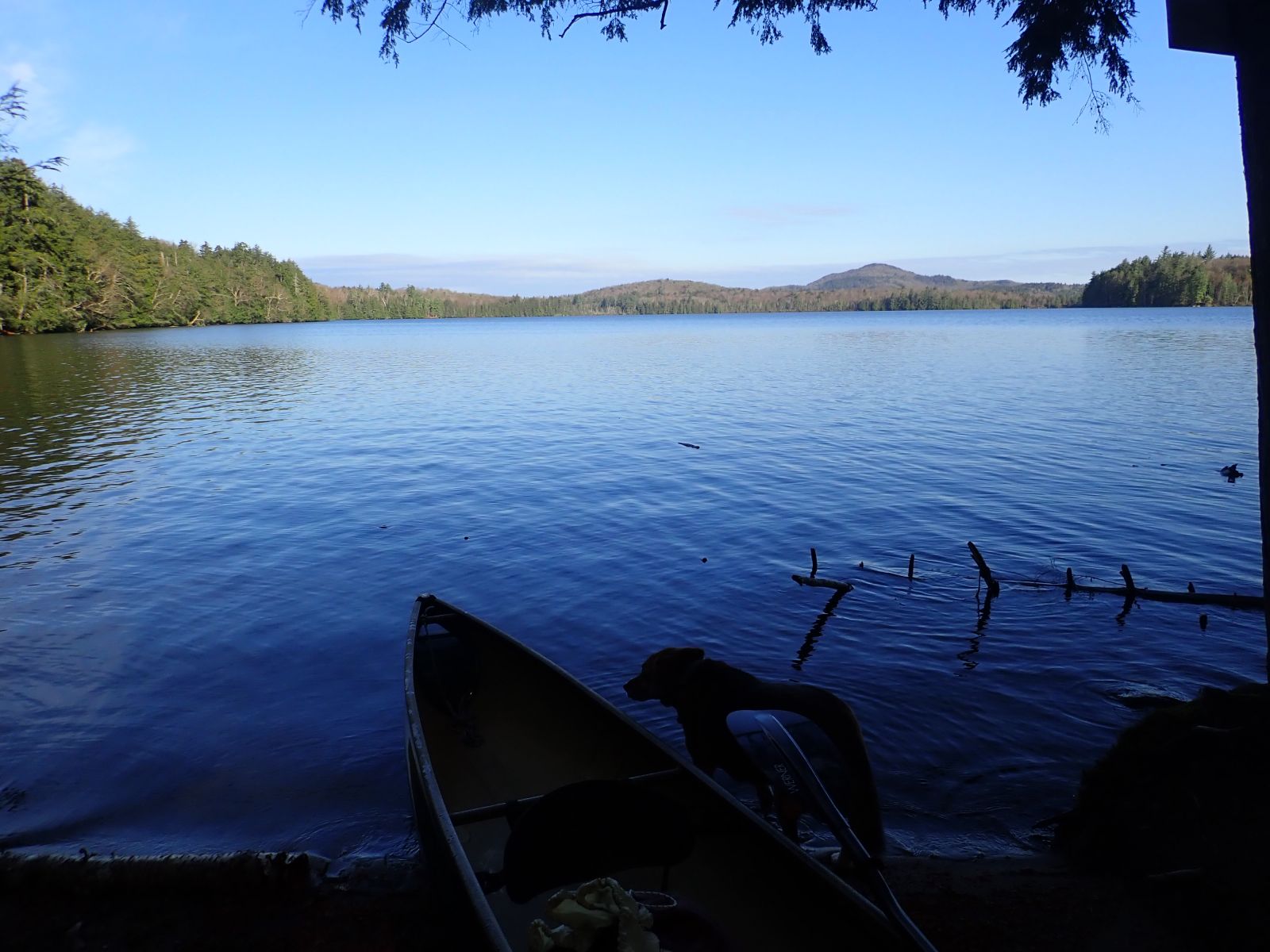
Turtle Pond is a beautiful body of water with a few nice campsites. The pond is surrounded by a forest consisting mainly of white pine, aspen, maple, and birch trees. When the red maple leaves are beginning to come out in spring, it is striking to the eye as you scan the horizon. The pond turns to the left, flowing into Slang Pond. In the summer months this is shallow to the point that you have to walk your boat a few feet before reaching deeper water. As you paddle between Turtle and Slang Ponds you are surrounded by bog plants. The tiny leaves on the Bog Labrador Tea are just beginning to emerge. It won’t be long before the cluster of small white fragrant flowers are in bloom.
We paddle into Slang Pond, taking note of the overhanging rocks at the nearby campsite. We hear loons calling at the other end of the pond. As we draw near the portage from Slang to Long Pond we see what all the commotion is about. A bald eagle soars above the site where the loons have laid their eggs. The loons are out on the water trying to draw the attention away from their nest. We sit and watch from a distance. The eagle flies off in another direction and the loons seem to breathe a sigh of relief for now.
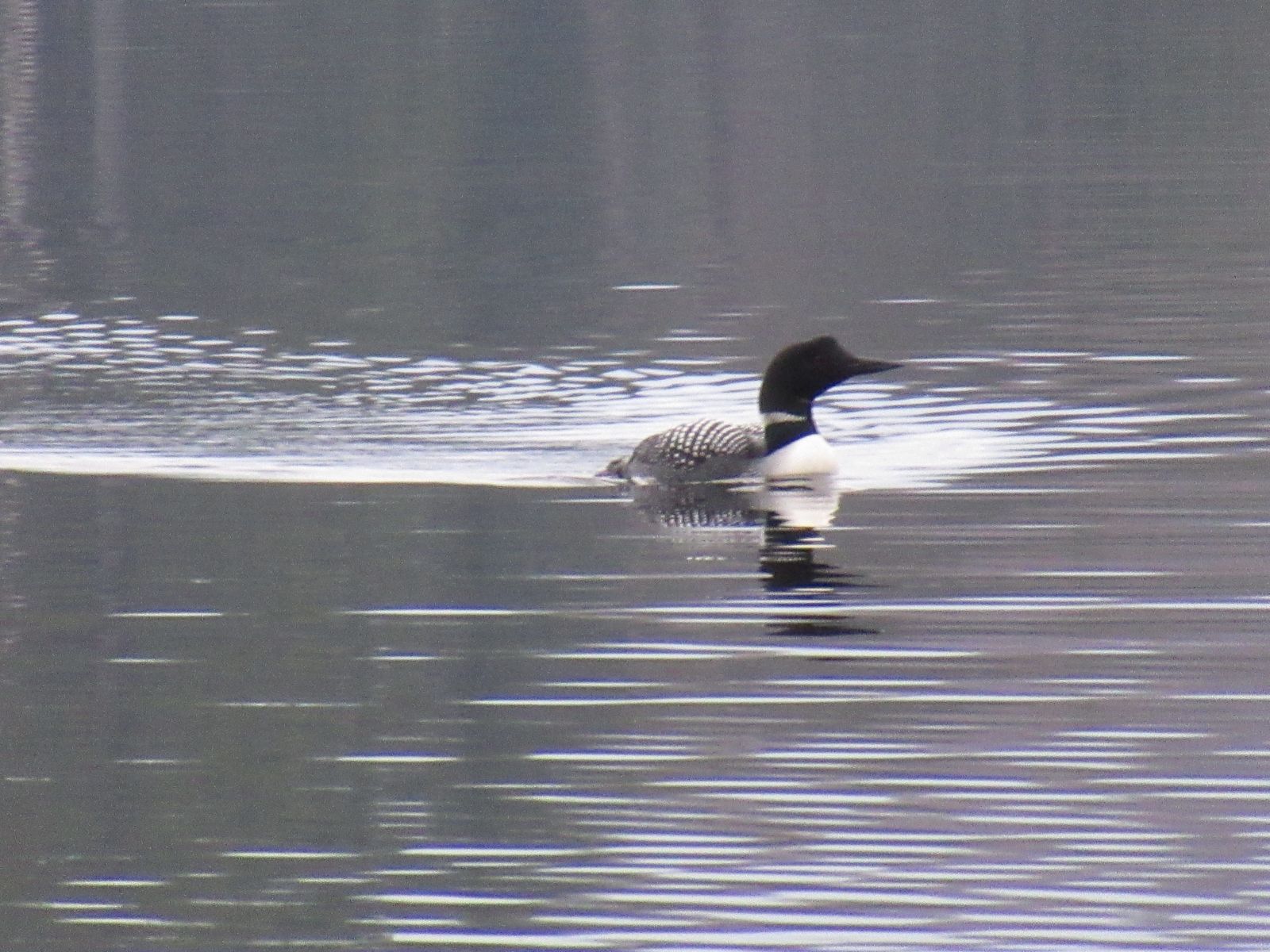
Loons mate for life, and every year they return to the same pond. The loons here have been very active in mating and setting up their nests. It is common for the males to select the nest site in a protected area near the shore. The male and female build their nest together and work together to protect their nest. The incubation period for a loon is 26-29 days, and a baby loon can swim and ride on its parents’ back within hours of hatching. The parents will stay with the baby loon through the summer teaching it the skills to survive on its own.
The portage from Slang Pond to Long Pond is 351 meters. Either end of the trail is a great place to stop and take a break, go for a swim, or eat a snack. Along the trail it is fun to stop to and look at the wildflowers. The trilliums (Trillium undulatum) and hobblebush (Viburnum lantanoides) are the most common flowers to see along the trail in early May. Later in May and early June you can see the Canada Mayflower (Maianthemum canadense), trout lilies (Erythronium americanum), pink lady’s slipper (Cypripedium acaule Aiton), and many others. This is a great time for exploring the wildflowers in the Adirondacks.
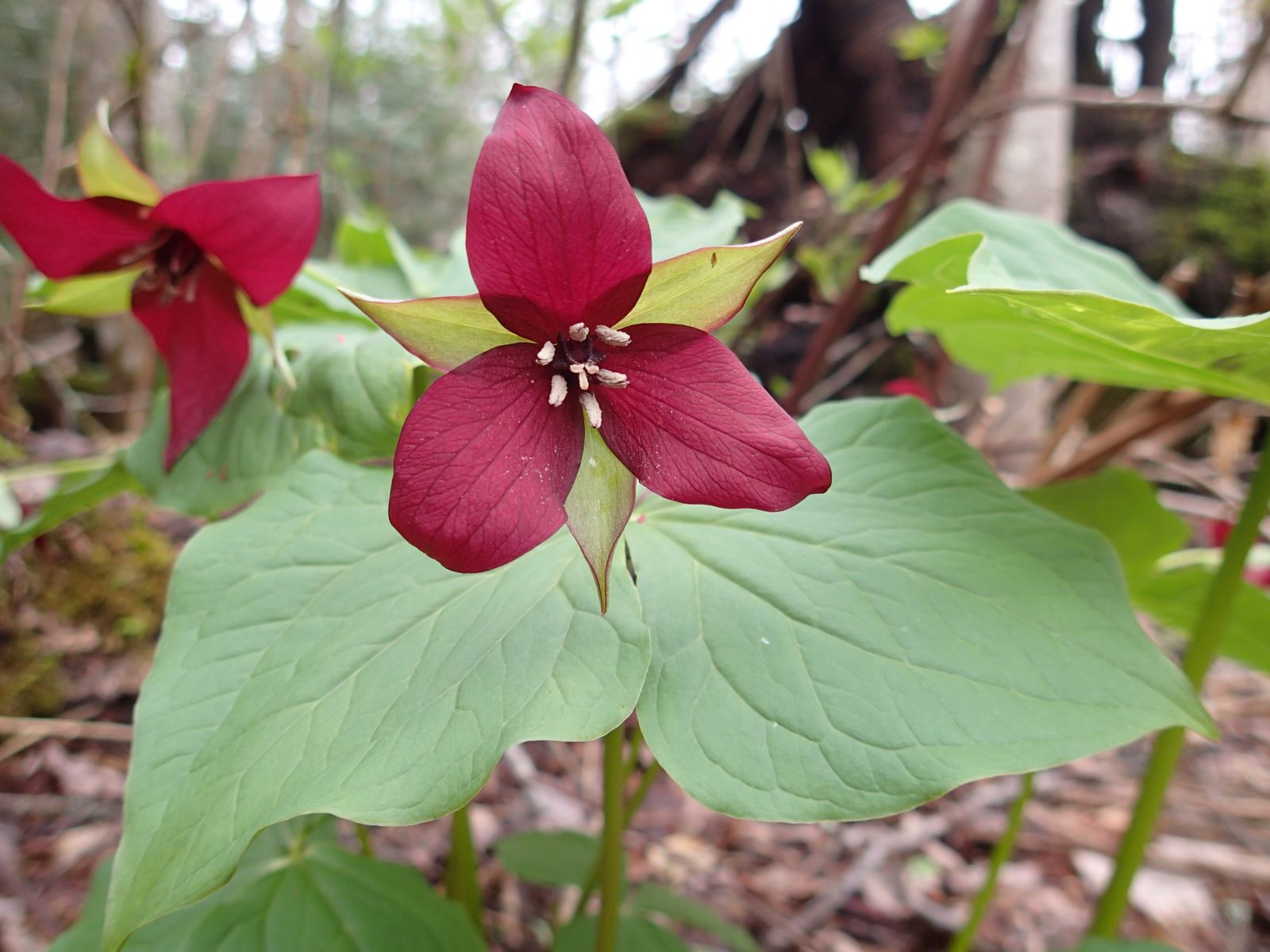
We emerge from the portage trail to take in the view of Long Pond. Straight ahead is Long Pond Mountain, which is a great trail to hike. It is a 3.2-mile round trip hike to the summit of Long Pond Mountain. The view is stunning. Along the way you will pass Mountain Pond, which is a great destination in and of itself for swimming or fishing. There is a campsite nearby for those who choose to stay the night. There are views from both sides of the mountain.
There are lots of really nice campsites on Long Pond that are spacious and well cared for. Each campsite has a fire ring and a cleared space to set up your tent. Most of the campsites have sandy beaches that are nice for swimming. Long Pond is large enough to be classified as a lake with various bays and outlets. As we paddle the pond we come across lots of loons, some of which are in pairs and others that appear to be on their own. It is always a delight to see the loons. The voice of the loon is stunning to hear. They have four distinct calls, including the tremolo used to signal alarm, the wail used to connect with their mate, the yodel, and the hoot.
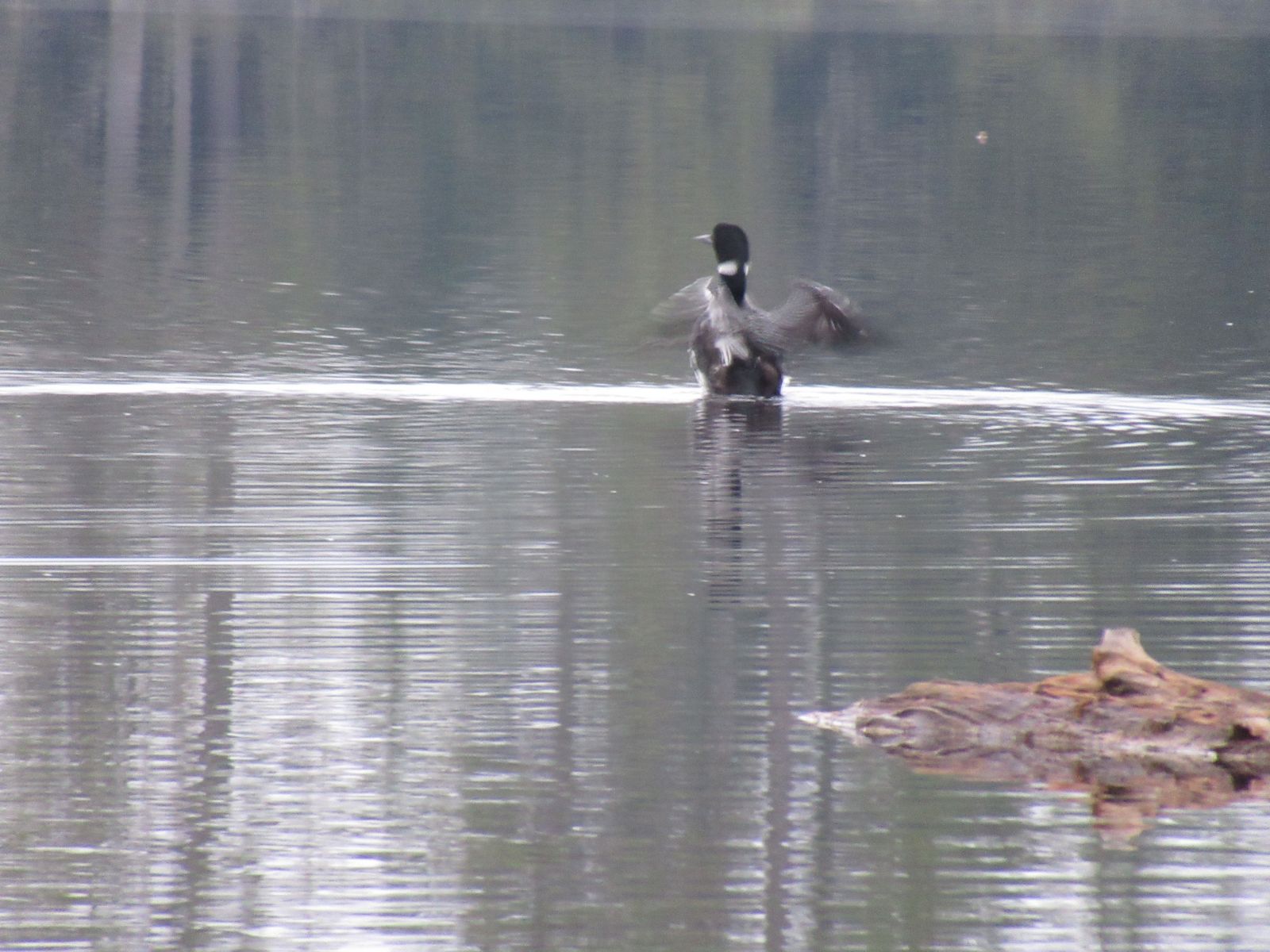
Instead of hiking up Long Pond Mountain today, we opt to paddle into Pink Pond to explore the bog area. As soon as we leave Long Pond and begin to enter the bog area we are surrounded by a chorus of song birds including the warblers, which have recently returned from their winter home in the Caribbean islands. As we sit quietly we hear the sharp "chek" of the yellow-rumped warbler, and the buzzy trill with a swelling pitch for the palm warbler. We hear the white-throated sparrow calling out Oh-sweet-Canada or Old Sam Peabody-Peabody. In the distance we see a pair of common mergansers flying by as if to invite us to paddle onward.
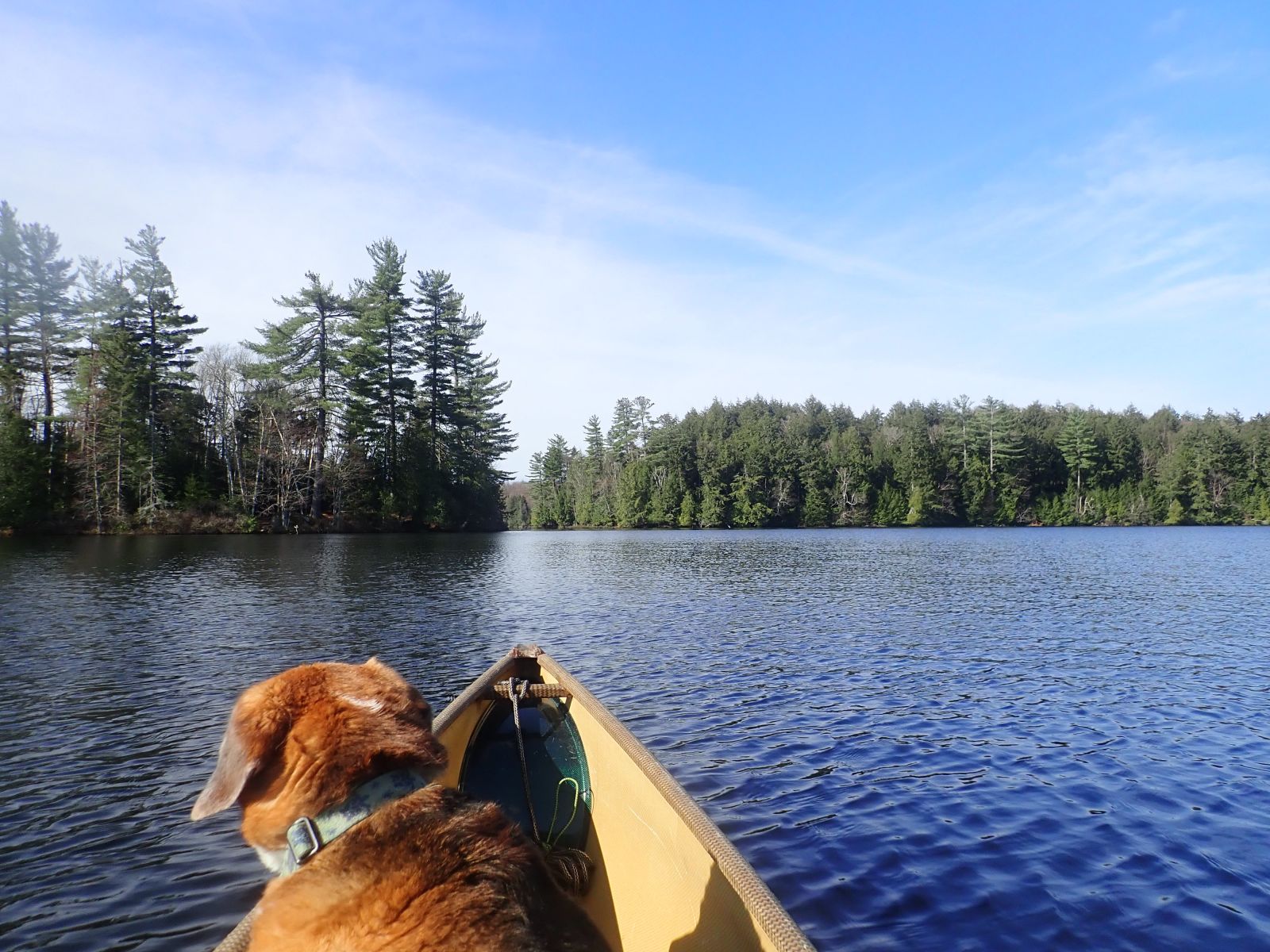
We continue paddling along noticing the new spring green needles on the tamarack trees that have recently emerged. They are a coniferous tree that sheds its yellow needles in the fall. The dark red carnivorous pitcher plants have grown tall enough that they will soon be inviting insects into their tubular shaped bodies to be digested with the enzymes the leaf fluid produces. The moss has begun to turn a brilliant green. The roundleaf sundew (Drosera rotundifolia L.) is rousing after a long winter of dormancy. The bog laurel, sheep laurel, and Labrador tea are all producing new growth on their branches.
We paddle further into Pink Pond, to check out the campsite. We resist the urge to paddle into Little Pink Pond, and instead turn around and head back to Long Pond. The take out for Long Pond is just across the bay. We take our last look at the view of Long Pond before gathering our belongings and carrying our canoes out to our car that waits in the parking lot. St. Regis Canoe Outfitters Floodwood Outpost is just a short distance down the road and they offer to conveniently shuttle your car from the start of the trip to the take out. It was a wonderful experience. We leave feeling a deep inner peace that we carry home with us.
